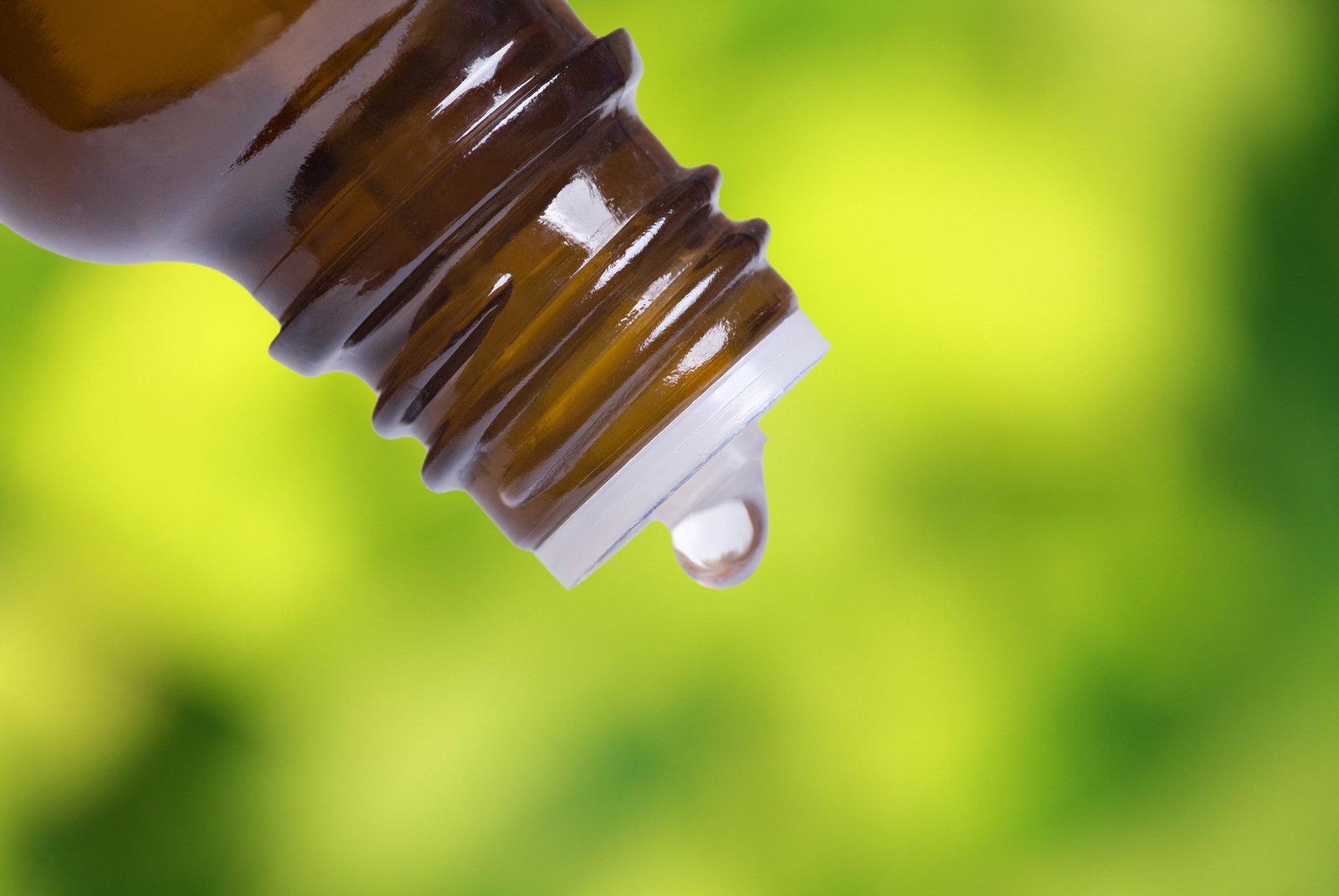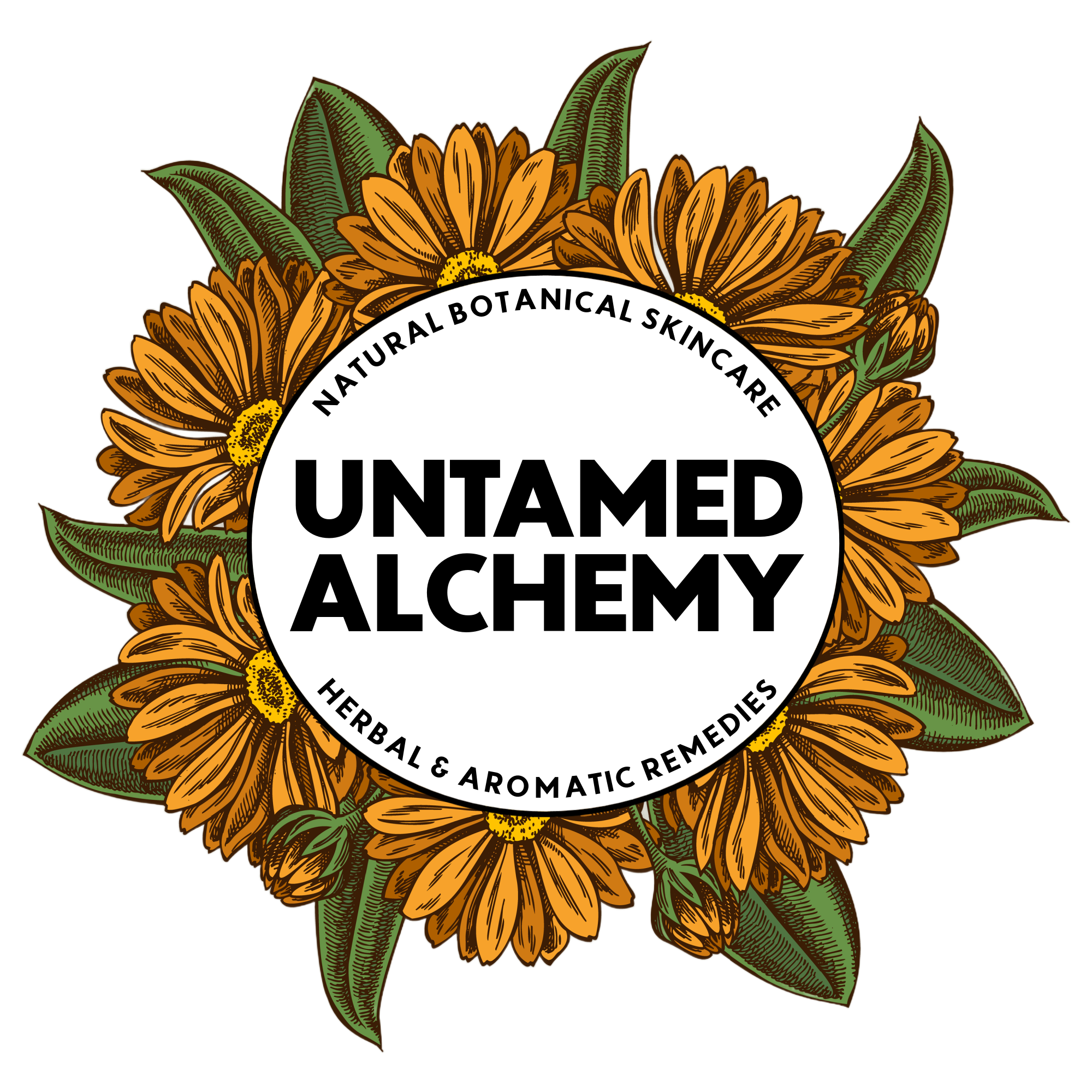This is part iii of iii in response to “what brand of essential oils I recommend,” focused on the red flags I sometimes see with potential suppliers along with one big, beautiful appeal for peace, love, and understanding…
You’ll find part i, my thoughts on the question in general, here. and part ii, things I consider in choosing my suppliers, here.
Part III: My Red Flags
As much as there are things I look for in my essential oil suppliers, there are also a few things I am hoping not to find. Experience has taught me to pay attention to a few red flags that may be waving from some potential suppliers.
I am weary of companies that run their testing through in-house laboratories and chemists. That means the paychecks of the trained professionals vetting an oil for quality and purity are coming from the same company that is selling the oils. (Note: Companies still pay qualified professional chemists in independent laboratories, but I prefer when those chemists and labs are compensated as independent consultants as opposed to direct employees.) The in-house scenario makes it too easy for a company to simply dismiss the information an employee provides about a given essential oil’s purity or quality and, more often than not, an internal employee has no recourse to debunk the claims their company ultimately makes based on their employment agreement. Many independent consultants require that their analyses are faithfully and honestly communicated; misrepresenting an independent consultant’s analysis may have dire consequences for a supplier.
As I mentioned in part ii of this series, I raise my eyebrows at companies who do not willingly share their gas chromatography/mass spectrometer (GC/MS) reports. In the mind of many aromatherapists, a GC/MS is the shortest distance between the question of an essential oil’s purity/quality and the answer.
Some companies sell essential oils without any qualified aromatherapists on their staff and no real industry knowledge or experience. It makes me nervous when a company presents essential oils without an anchor to best practices, safe use, education, history, and the community at large. In the absence of a qualified owner/operator/business leader/staff member, you never know who the person behind the curtain is. It could be some random, goofy person who’s just eager to cash in on the public’s enthusiasm for essential oils….

Sloppy product labeling, oversimplified/incomplete product descriptions, and lack of relevant safety information (including specific contraindications) are big red flags for me. A product’s label should provide key information about the essential oil it contains. Even if one has more detailed information available elsewhere (such as on an invoice) at the time of purchase, that information can be hard to track down after the oil has been in one’s possession for a few months–best to have it on the label.
Essential oils are wonderful resources, but they cannot be leveraged safely by all populations in all ways with equal safety and efficacy; suppliers should appreciate and support safe use by thoughtfully communicating how they can be used along with how they should not.
Some companies market their essential oils and blends by straight-up suggesting they be used in unsafe ways. A most extreme example would be suggesting Carrot Seed (Daucus carota) to address skin issues for a pregnant woman. (Carrot Seed is contraindicated in both pregnancy and throughout lactation.) Just, NO. Nuh-uh. They go there, they can’t have my money.

I expect my suppliers to comply with FDA and FTC regulations surrounding the marketing and labeling of essential oils. Companies who recklessly market their essential oils or blends are out of scope for me.
Some companies have chosen to specifically market and label all of their essential oils as supplements, meaning they are fundamentally intended for ingestion and that’s just a big “no-no!” in my house. Even if you put aside the potential disagreement over the general safety of ingestion, the appropriateness of internal use, and the arguments over neat application vs. diluted application, this is still inappropriate to me as suggesting an essential oil is intended for BOTH ingestion and topical use flies in the face of FDA regulations under any circumstances. Since essential oils have no nutritional value whatsoever, I find the “supplement” labeling of essential oils to be disingenuous. The fact that many of the means of ingestion suggested by these same companies carries considerable risk only makes this flag bigger and redder in my humble opinion.
I don’t trust any company that suggests that adverse reaction to an essential oil is really just one’s body “detoxing.” First of all, this is just not in keeping with the physiology and functioning of the human body. Secondly, it may encourage someone who is having a bona fide adverse reaction to apply even more of the offending essential oil to which they’re adversely reacting. That kind of approach can not only create but actually exacerbate harm.
I don’t trust trademarked assurances about quality and purity. There are a host of companies who have created their own, unique way of communicating that their oils are the best–and NONE of that language or those claims are verified by, approved by, or reflective of any governing, legislative, or regulatory body. There ARE no standards recognized or enforced by the FDA for essential oils in the U.S. that can assure consumers of a quality or purity. The only real standard is a chemical analysis conducted, vetted, and clarified by a qualified chemist. The marketing language that is created, owned, and trademarked by an essential oil company to communicate the “purity” of their essential oils is that and only that in my opinion: marketing language. It does not assure me of the quality or purity in the context I have come to understand as being most important.
 I am often hesitant to purchase essential oils from suppliers whose main business is actually in synthetic fragrances. While some companies, like soap-making supply companies, have some reason to go there for their customers, synthetics are not in keeping with the fundaments of real aromatherapy–synthetics are in no way comparable to or replacements for pure, true essential oils! While a synthetic may smell lovely, it brings no therapeutic or energetic properties to bear. It can carry additional risks for sensitization depending upon the ingredients of the synthetic blend. (TRUST ME: Even the most amazing noses in the industry have been fooled by synthetic blends! You can’t necessarily tell!)
I am often hesitant to purchase essential oils from suppliers whose main business is actually in synthetic fragrances. While some companies, like soap-making supply companies, have some reason to go there for their customers, synthetics are not in keeping with the fundaments of real aromatherapy–synthetics are in no way comparable to or replacements for pure, true essential oils! While a synthetic may smell lovely, it brings no therapeutic or energetic properties to bear. It can carry additional risks for sensitization depending upon the ingredients of the synthetic blend. (TRUST ME: Even the most amazing noses in the industry have been fooled by synthetic blends! You can’t necessarily tell!)
Companies that are newly emerged in the industry–and therefore don’t have established reputations–sometimes make me a little nervous. I prefer my suppliers to be established with good, verifiable reputations in the aromatherapy community. That doesn’t mean that a relatively new company is no good, only that they are somewhat unproven.
While the pricing of essential oils can be difficult to understand, there are some easily identifiable things that can serve as “red flags” with respect to pricing. I’m weary of any essential oil company whose prices don’t reflect the unique costs of the source material and extraction method. The cost to produce different oils can vary tremendously in the ratio of the volume of source material to yield, the base cost of the source material, and the expense of the distillation process. Said differently, I’m leery of any “brand” that offers thirty different oils, from jasmine to lemon and rosemary to blue tansy, that sells all of those oils at mysteriously similar prices, say from $10 to $15 a bottle.
If a price is higher than I think it should be, I want that price to be defensible or I have a “red flag.” Some companies roll the price of providing batch-specific GC/MS reports, which can be expensive, into their product costs–and that checks out for me. Other companies, by virtue of their multi-level marketing structure, compensate their reps/advocates/distributors; those expenses are inadvertently rolled up and reflected in the prices of that company’s essential oils, so that’s not unexpected either. It also happens that some source materials, which are primarily agricultural products, have a bad season or year, making the source materials more scarce. Sometimes, the nature of a price difference will check out based on what else I know. But I often watch prices across suppliers, even those I don’t necessarily purchase from, to gain and refresh my perspective.
Any price that is either unexpectedly high or too low (aka, good-to-be-true) catches my attention. This is especially true when a company’s prices are consistently higher, consistently much lower, or not remotely reflective of the actual cost to source and produce the single essential oil in question. There’s usually a reason for that and I want to understand what it is. Sadly, this year has provided an excellent example as to why buyers’ should be aware, especially with unreasonably “good deals.” With the limited availability and soaring prices of Blue Tansy (Tanacetum annuum) essential oil, a handful of suppliers were offering a “Blue Tansy” essential oil at rock-bottom prices–and some people were very excited about their great fortune. After concern from industry experts resulted in an offer from one expert chemist to test Blue Tansy oils for free, some of the too-good-to-be-true “Blue Tansy” was proven not to be Blue Tansy at all: some of it was Nepalese chamomile, a much less expensive (and wholly different) essential oil. (Womp, womp, wommmmmmp….)
So, if you got a particularly crazy good deal on Blue Tansy in the last few months, say 80% less than some companies are selling it for, or, say, your 5 ml bottle of “pure” Rose oil cost you less than $20, I’d be very, very concerned if I were you…. Pricing can do much to raise or lower a red flag!
Finally, an offer of and appeal for peace, love, and understanding….

I am not trying to create dissent in the aromatherapy community, discredit specific suppliers, acclaim other suppliers, or judge the choices you make with respect to where and from whom you purchase your essential oils and aromatherapy ingredients. (You’ll notice I’ve named NO ONE in these posts? Yeah, that’s not an accident….)
By now you know that my answer to the question of what brand I recommend is never the name of a brand or company I recommend, but rather what I consider in in answering the question for myself. I’m not here to tell you which brand or company to choose–and I haven’t. Truth be told, the only people I readily share my suppliers’ information with are my workshop participants as they may be compelled to work with the same materials I offer up for use in my workshops.
I appreciate that my thoughts, considerations, and red flags may not only be irrelevant to you, they may also fly in the face of the things you personally hold dearest about your existing supplier(s). I did not write this post to challenge you, your allegiance, or your perspective, I’m just looking to respond meaningfully to a question that’s posed to me personally, intently, and endlessly, a question that takes real time for me to thoughtfully answer.
There is room for all of us, ALL kinds of both consumers and suppliers. As long as there is a consumer willing to purchase from a supplier, that supplier has a chance to remain in business, grow, and thrive. We don’t have to challenge each others’ choices and prevent others from aligning with suppliers they like just to keep our own preferred suppliers in business. The absolute best way to support a business you feel strongly about is to continue to purchase their products.
Meanwhile, unscrupulous companies, suppliers with abominable customer service, and companies operating out of bounds with respect to governmental regulations will definitely feel it when their oils are revealed to be fraudulent, their customers abandon them, or the FDA holds them accountable for their disregard of the “rules of engagement” in the industry.
Lastly, a clarification with respect to multi-level marketing (MLM) companies:
I have only addressed multi-level marketing companies in these posts (and still, never by name) when their unique structure, growth model, marketing practices, relationships with their representatives, and/or product labeling becomes relevant in my personal considerations. Multi-level marketing companies stand apart from what was once the industry norm and therefore require some special context. Some of that context is compelling and relevant for me; it may not be for you. Where MLMs are addressed uniquely from my perspective, it’s because they present uniquely–and some of the ways in which they do are among the things I think about when choosing a supplier.
Go forth with peace, love, and understanding in your search. Know yourself, know your wants, needs, and demands, know your suppliers. Enjoy your essential oils. Bless and blessed be.
Kristina, the Untamed Alchemist








That was a good series. I am glad you didn’t name any names — too many bloggers have already done so — and I agree with you: naming favorites would slight those you don’t name who also fit the criteria and are also perfectly good companies. You may get fussed at for not naming them (I hope not) but this series is a good introduction that teaches people how to do their own research and to find what works best for them. I think there are too many sheep in the essential oil world. People need to stop expecting to be spoonfed.
Nice work!
Thank you for such a balanced and articulate series. I have picked up quite a few points for further research and look forward to fleshing them out as I build my own practice. One of the most important things to me, that I plan on calling out as a selling point, is safety. I would be utterly mortified if someone were to have an adverse effect because of my lack of knowledge – either in use or procurement of a component. I also connect strongly with your commitment to the earth and her inhabitants, ecologically and economically. I am so happy to have come across your blog – it will be a great reference!
Nicely stated. However I’m curious if you can clarify further the question of third-party testing. There is a well-known authority in the world of essential oils who claims he tests for “many” different companies and claims/insists of no affiliation with any. However he is often pictured, quoted and affiliated with one company in particular despite his claims that he isn’t. He is pictured at their meetings, at their annual convention where he is one of the speakers and is introduced as someone who is one their team. I can’t understand how this is considered independent and I can’t understand how he continues to make claims he is not affiliated with them. I’m assuming they pay him for his work. How is that different than being in-house? Independent contractor or not, if you are paid by the company you are testing for that is compromised already isn’t it?
In this case, it makes me question his work and professional opinions even though he seems to be at the forefront of testing and credible evaluation. Maybe everyone already knows the deal with him, but I am honestly confused and find it hard to figure out who to trust. I realize I am going to have to do much of my own studying and knowledge building but still I never know whose information/opinion/shared knowledge base to take seriously when people like him are given great authority but leave a big question mark in my mind.
Hi, Molly! Thanks for your kind comment. 🙂
I can try to explain the general differences as I understand them, but I can’t pretend to know the details of the individual you’re referencing. With that caveat in mind, here’s how I would further explain the broader consideration of third-party testing and “affiliation”….
First of all, I think it’s important to say that the best chemists and analysts in the field not only have considerable education (PhDs) and work with complicated (and expensive!) equipment, they also have experience leveraging their education specifically with essential oils. One way or another, their work, skill, education, and experience have to be compensated, so we can expect them to be paid under any circumstances, either as direct employees or independent contractors. Inevitably, every analyst is in some way connected to the supplier for whom they are conducting a test, but that isn’t a bad thing. The challenge can be in understanding the nature of that affiliation and how it’s leveraged by the supplier (and handled by the chemist).
The question of affiliation can come down to semantics–what does affiliation mean to you? To the supplier? To the chemist? Because there are a limited number of individuals in the field, and still fewer with truly exceptional credentials, some of the best independent chemists and analysts inevitably work with more than one essential oil supplier. In some ways, that’s what sets them apart from an in-house tester: these chemists represent their results, not a single company. So while a chemist may be working with many suppliers–and often develop ongoing relationships with them over time–the nature of their engagement/contract can maintain that their results do the talking. So while an independent analyst may be under long-term contract to test essential oils on an ongoing basis for an established supplier, that analyst is not only under no obligation to “represent” the supplier, s/he may have a contract that expressly states that s/he will NOT speak to the quality of a company or brand, but instead provide reports and analyses that speak to the quality of individual batches of essential oil that have been tested. Some independent chemists have chosen to express directly in their contracts that their name and likeness cannot be leveraged by the suppliers for whom they test. Sometimes, however, that’s one of the big things a supplier wants: a chance to show the world at large that their essential oil was tested by a recognized industry expert. Because a credible expert brings credibility, it’s understandable that suppliers may want to draw down on their connection with an expert chemist, consultant, or analyst as much as possible. That doesn’t mean the chemist necessarily allows or even likes it… An independent chemist who vehemently and consistently disassociates from specific brands, suppliers, or allegiances is probably a very good thing!
It is important to realize that the tests, reports, and analyses conducted by chemists are also often key to a company defending itself or its reputation. When a company finds itself in the middle of a battle with a farmer, distiller, broker, competitor, or the like, they might require their independent chemist to help them address the challenge legally by defending lab results. (By way of example, let’s say a company paid for organically-procured lavender, but lab results for the resulting essential oil show the presence of pesticides not approved in organic farming. Or, variously, a company paid for a large batch of melissa that turns out to be adulterated with synthetics.) In pursuit of justice, the chemist/analyst may be called upon to do exactly what they are paid to do: represent the quality of their tests, communicate their knowledge, and reveal the concerns that support the supplier’s case. To wit, even independent chemists could find themselves on the witness stand to help a company for whom they’ve conducted tests make its case. That does not mean they are defending the company–they are defending their independent test results.
As a true expert in the field (in a corner that is often extremely confusing to laypeople, I might add…), it’s also not unreasonable for a chemist to be invited to speak at a convention to address and enlighten participants in their area of expertise. It’s another way they can educate and empower aromatherapists in their understanding of the fundamental chemistry of essential oils. That doesn’t necessarily mean a chemist is in a supplier’s pocket.
Real transparency, in my mind, happens when you have a reputable chemist/analyst independently conducting regular, batch-specific tests, reports, and analyses (because a test alone does not illuminate the big picture without some further attention and insight) that are summarized and willingly shared by a supplier. That not only says the essential oil has been tested, but the results are available for consumers to vet. Without the results being shared, it’s possible, though not exactly ethical, for a company to test and sell an essential oil that did not pass analysis. A supplier can choose to just ignore the test results. When the results are shared with consumers, most suppliers are under a contractual obligation not to misrepresent the chemist’s analysis–and a supplier can quickly be called out by the independent chemist if the supplier tries to do so as the supplier is at that point in some way seeking to misrepresent the independent test results, which are the lifeblood of the credible, independent chemist.
Hope that helps to frame the bigger issue for you somewhat. 🙂
Blessings,
Kristina, the Untamed Alchemist
Wow, that is an incredibly thoughtful, thorough and detailed clarification. Thank you so much Kristina. So very helpful. I guess I’m muddled by the fact that he is so good and qualified, as you describe, and yet his affiliation by trade and practice, as you detail, is with an MLM. And by the very nature of the MLM business model, and certain known and questionable tendencies by many (not all) in affiliation, I am a little wary.
Still, based on what you say, I will try to separate the two (expert and EO company) and see the expert analysis for what it is, which is credible in light of his qualifications and many other factors that you mention.